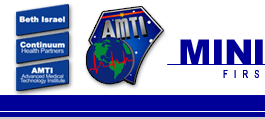The gallbladder is a small, pear-shaped organ positioned under the liver in the upper right portion of the abdomen. The function of the gallbladder is to store a digestive fluid called bile that is synthesized in the liver. The most common conditions related to the gallbladder are due to gallstones. Gallstones form when liquid bile crystallizes into small “stones.” Gallstones can then clog the main duct between the liver and the small intestine, the Cystic Duct, which can cause it to swell. As a result of this swelling and increase in pressure, patients with gallstones may suffer from sharp abdominal pain, vomiting, and indigestion. These symptoms can occur at different times of the day, after meals, or in some cases they can produce chronic, constant and sever pain. Without treatment, these symptoms may worsen.
In some cases an adjustment in one’s diet can provide adequate treatment for gallbladder problems. However, when severe obstruction of the gallbladder occurs, surgery may be the only option. Only your physician can be sure what course of treatment is right for your particular case. If surgery is the form of treatment your doctor recommends, Dr. James “Butch” Rosser’s laparoscopic gallbladder surgery may be appropriate for you.
How is laparoscopic cholecystectomy performed?
In laparoscopic gallbladder surgery, surgeons use a device called a laparoscope, a thin instrument containing a tiny video camera, smaller than a blueberry, on the tip. The laparoscope is inserted into the abdomen and using the laparoscope’s video camera, the surgeon is able to view the entire operative site on a monitor in the operating room. To give the surgeon maximum visibility, a gas (carbon dioxide) is inserted into the operative area. The surgeon then performs the surgery using specialized surgical instruments which are inserted into two or three small incisions near the operative site. Because these incisions are so small, they can be closed with a few stitches and surgical tape and become completely or nearly invisible a few months post-operatively.
What are the benefits of laparoscopic cholecystectomy?
• Four tiny scars instead of one large abdominal scar
• Shorter hospital stay – you may leave the same day or the day after surgery
• Reduced postoperative pain
• Shorter recovery time – days instead of weeks – and quicker return to daily activities, including work
What can I expect after surgery?
Each patient’s response to laparoscopic surgery is unique, and Dr. Rosser provides each of his patient’s with a instructions specific to their procedure. For most patients, recovery time for the laparoscopic procedure can days or weeks shorter than the “open” method. Many people feel better within days, although patients may not return to their full pre-operative condition for a few weeks.
How safe is laparoscopic cholecystectomy?
With Dr. Rosser, a board certified surgeon and Chief of Minimally Invasive Surgery (which includes laparoscopic surgery) at Beth Israel Medical Center in Manhattan , a laparoscopic gallbladder procedure is as safe as “open” surgery.
Appointment
To schedule an appointment, please call 212.420.4337
Contact Webmaster with questions or comments
Copyright © 2005 Advanced Medical Technology Institute
|










